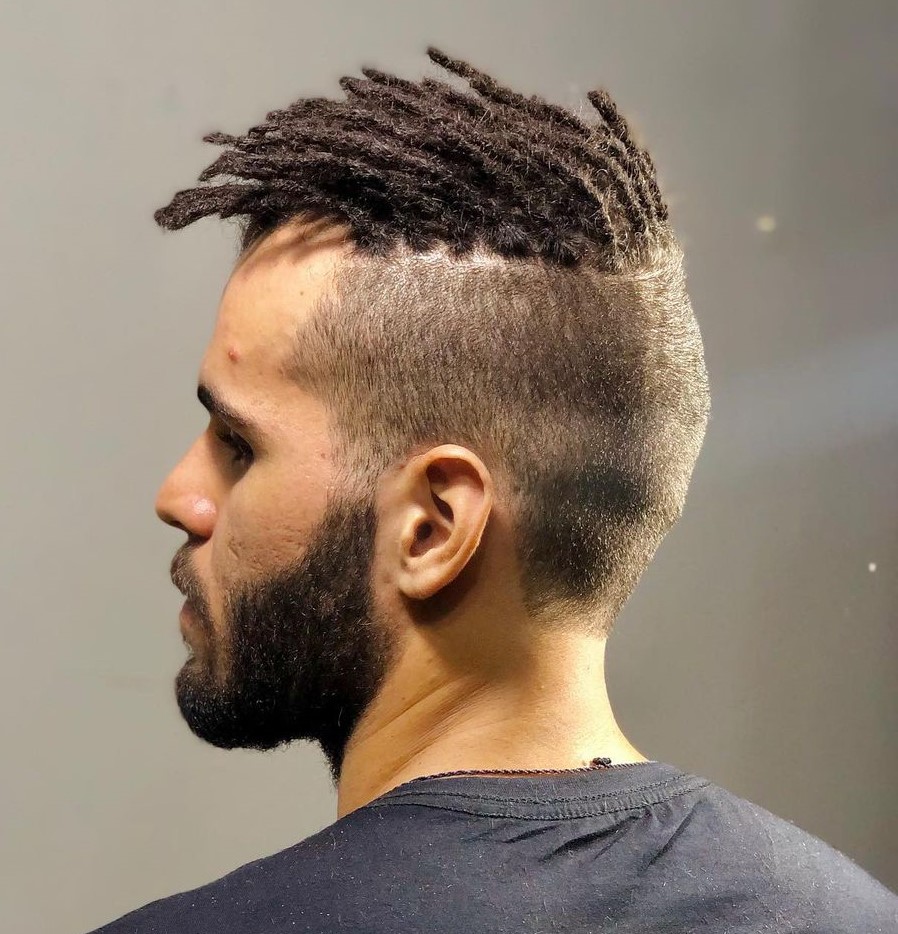READ ALSO: What Does 40 Dreads Look Like? Is 40 Dreads Enough? & More
Full Head Dreads vs High Top
If you’re weighing the choice between a full-head dreads look and a high-top / high-top dreads style, here’s a detailed breakdown of each — what they are, how they compare, what to consider — so you can decide what’s a better fit for your hair type, lifestyle and look.
Table of Contents
What They Are
Full Head Dreads vs High Top: Full-Head Dreads
This means your entire head of hair (top, back, sides) is formed into dreadlocks (locs) — so the sides and back are also locked, not just the top section.
Because the whole head is locks, there’s a consistent texture and the look is uniform.
High-Top (or High-Top Dreads)

In this style, the locks or dreads are concentrated on the top portion of the head, while the back and/or sides are cut short or faded.
High top dreads are locs styled on the top half of your head with tapered or faded hair on the back and sides.
It’s a hybrid look: part traditional locked texture + part clean shaved/faded sides.
Also, in a broader sense the “high-top fade” haircut (without dreads) is a style where the top is grown long and the sides are very short/faded.
How They Compare: Pros & Cons
Appearance & Style
- Full-head dreads give a bold, unified look. The dread texture is consistent all around, which often means a more “traditional” or “classic” vibe for locs.
- High-top dreads give more contrast: locked texture up top, cleaner sculpted sides/back. That contrast can look modern, stylish, and draws attention to the top.
Maintenance & Practicalities
Full-head dreads:
- Since everything is locked, you’ll need to consider the weight, the volume, and how long it takes to maintain locks everywhere (including sides/back). One could argue that a full head of dreads means you have more dreads, and therefore more weight to carry and more hair to consider.
- On the flip side, once the locs are matured, styling can sometimes be simpler (you lock everything in and go).
- Because sides/back are included, you get full coverage and uniform texture; some people like that for its fuller profile.
High-top dreads:
- With sides and back cut/faded, you may have fewer locks (only on the top portion). That means lighter weight on the head overall.
- The fade/shorter sides mean you’ll need frequent barber visits to keep the fade sharp if you want it maintained.
- Styling the top may call for more upkeep because the contrast is part of the look (keeping the fade crisp, ensuring top locks are kept neat).
Face Shape & Hair Texture Fit
- For high-top styles: Because the top has significant height (or at least prominence) and sides are short, this can elongate the face or make the head appear taller/spikier. For some face shapes this is flattering; for others maybe less so.
- For full-head dreads: The style is more uniform, so face shape plays into how the locks frame your face and how long/thick they are.
- Hair texture matters: Both styles work best with thicker/coarse/kinky textures (natural hair) because locks form easier and maintain volume. The high-top fade itself is known to pair especially well with afro-textured hair.
Versatility & Design Options
- Full-head locks: you can style the locs in a lot of ways — pull up into buns, ponytails, half-up, wrap, color, etc.
- High-top locks: you get a bit more variation with the sides/back being short — you could push the focus to the top and do dramatic styles there (pony, bun, high knot) while keeping the rest sleek. For example, one article lists high-top dreads in ponytail or bun with faded sides.
Photo credits: Di Dreads